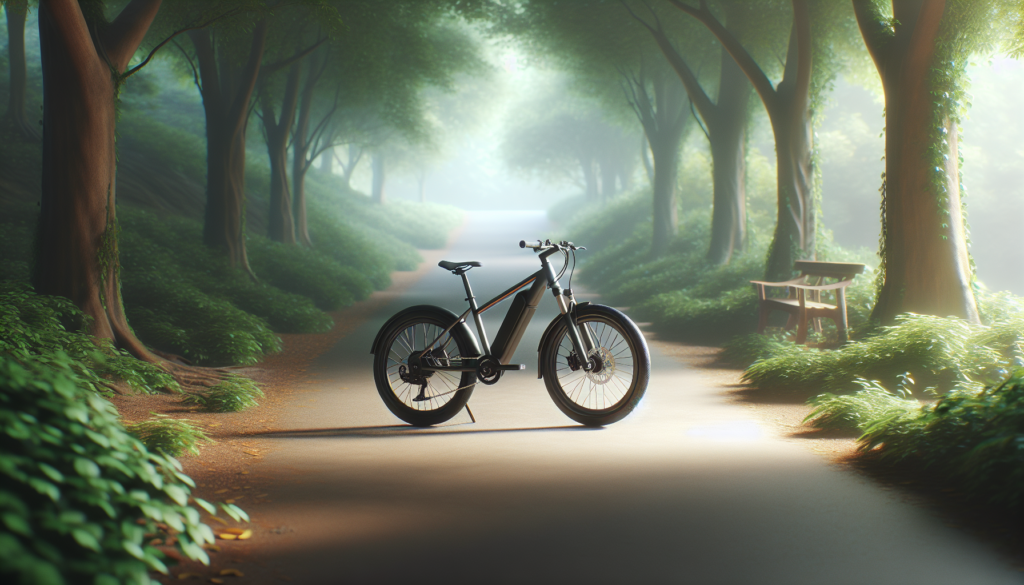
In the ever-evolving world of electric bikes, choosing the right model can be a daunting task. Two popular contenders in this space are the Xiaomi Ebike Himo Z20 and the ADO A20 Lite, both offering impressive features tailored to meet the needs of modern riders. The Xiaomi Ebike stands out with its dual electrical assist modes and a robust 36V 10Ah Li-ion battery, while the ADO A20 Lite from EKO Life MY captivates with its lightweight design and versatile assist modes.
As we dive deeper into this comprehensive comparison, we will explore how these models stack up against each other in terms of performance, design, and value, ultimately aiding you in making an informed decision on your next electric bike purchase.
Overview of the Xiaomi Ebike Himo Z20
The Xiaomi Ebike Himo Z20 makes a compelling choice for those seeking a blend of performance and practicality. Equipped with a dual electrical assist mode, the Z20 allows riders to select between Dynamic Sports Mode for an energetic ride or Cool Mode for a more relaxed experience. Its 36V 10Ah Li-ion battery offers an impressive range of about 60 kilometers, ensuring that users can enjoy longer rides without the need for constant recharging. With a maximum load capacity of 100kg and a weight of 21.6kg, it’s designed to accommodate various riders comfortably while maintaining a manageable weight for portability. Priced at RM 3,099, this e-bike presents a solid value for those venturing into the world of electric cycling.
In contrast, the ADO A20 Lite shines with its unique features, particularly its lightweight design of just 16kg, making it easier to handle and transport. The ADO A20 Lite is notable for its three electrical assist modes, catering to different riding preferences, while having a slightly lower 36V 9.6Ah Li-ion battery that still boasts a comparable range of approximately 60 kilometers. The belt system and mechanical disc brakes provide a smooth and efficient ride, enhancing user experience. At a price point of RM 3,699, the ADO A20 Lite offers a modern approach to electric cycling, appealing to those prioritizing both efficiency and lightweight design.
Overview of the ADO A20 Lite
The ADO A20 Lite is a noteworthy contender in the e-bike market, boasting a sleek design and an impressive set of features that appeal to both casual riders and commuting enthusiasts. With three electrical assist modes, it provides flexibility for riders to choose between different levels of power assistance, enhancing the overall riding experience. Powered by a 36V 9.6Ah Li-ion battery, the ADO A20 Lite achieves a commendable range of about 60 kilometers, making it suitable for daily commutes or leisurely rides without the worry of running out of power. The bike’s lightweight construction at just 16kg means it’s easy to handle and transport, which is a significant advantage for urban riders.
Its mechanical disc brakes ensure reliable stopping power under various conditions, giving riders peace of mind on their journeys. Furthermore, the ADO A20 Lite’s belt system stands out in contrast to traditional chain systems, offering a quieter ride and requiring less maintenance. With a maximum load capacity of 100kg, this e-bike accommodates a variety of riders and gear, emphasizing its versatility. Priced at RM 3,699, it may be on the higher end compared to some competitors, but the ADO A20 Lite’s advanced features and enhanced performance justify the investment for those seeking a reliable and stylish e-bike for urban commuting.
Electrical Assist Modes: A Comparison
When comparing the electrical assist modes of the Xiaomi Ebike Himo Z20 and the ADO A20 Lite, notable differences emerge that cater to various riding preferences. The Xiaomi Ebike offers a dual electrical assist mode: Dynamic Sports Mode, perfect for those seeking a more vigorous ride, and Cool Mode, which is better suited for leisurely trips. This versatility allows riders to customize their experience depending on their mood or riding conditions, making the Himo Z20 a flexible choice for different environments and terrains.
On the other hand, the ADO A20 Lite stands out with three distinct electrical assist modes, providing riders with more options to tailor their ride. This feature enhances the adaptability of the A20 Lite, allowing it to perform well in a range of scenarios, whether you are commuting through city streets or taking a leisurely ride through the park. Its 36V 9.6Ah Li-ion battery ensures a consistent range of approximately 60km, making it a reliable companion for daily use. With a lighter weight of 16kg, the ADO A20 Lite also offers superior maneuverability, appealing to those who value ease of handling along with versatility in electrical assistance.
Battery Performance and Range

When it comes to battery performance and range, both the Xiaomi Ebike Himo Z20 and the ADO A20 Lite present impressive specifications that cater to different riding needs. The Xiaomi Ebike features a 36V 10Ah Li-ion battery that offers a range of approximately 60 kilometers, making it a reliable option for both urban cruising and longer rides. This ebike provides dual electrical assist modes—Dynamic Sports Mode for a more aggressive ride and Cool Mode for a leisurely journey, which can help in maximizing efficiency during different riding conditions. With a maximum load capacity of 100 kg and a weight of 21.6 kg, it offers a solid experience for varied cycling adventures.
In contrast, the ADO A20 Lite, while slightly lighter at 16 kg, also boasts a 36V 9.6Ah Li-ion battery, delivering a similar range of about 60 kilometers. This model incorporates a belt system, contributing to a smoother and quieter ride. With three electrical assist modes, it allows riders to choose their preferred level of assistance while being equally capable of supporting a maximum load of 100 kg. Although the ADO A20 Lite comes with a higher price tag of RM 3,699, its lightweight design and versatile assist modes may appeal to cyclists looking for flexibility and ease during their rides.
Weight and Portability Insights
When it comes to weight and portability, the Xiaomi Ebike Himo Z20 and the ADO A20 Lite present different options that cater to various rider needs. The Himo Z20 weighs in at 21.6kg, a bit heftier than its counterpart. While this added weight may provide a sturdy feel and durability, it can be a consideration for commuters needing to carry their bike up stairs or load it into a vehicle. The Himo Z20 is still manageable for most, but those who prioritize lightweight options might find it less convenient for daily transport tasks.
On the other hand, the ADO A20 Lite boasts a significantly lighter design at just 16kg, making it one of the more portable electric bikes in its category. This reduction in weight does not compromise the performance, as it still supports a maximum load of 100kg and offers an impressive range. As commuters seek efficiency and ease, the ADO A20 Lite stands out for its lightweight frame, allowing riders to navigate urban environments effortlessly and transport it with ease when needed.
Load Capacity: How Both Ebikes Stack Up
When comparing the load capacity of the Xiaomi Ebike Himo Z20 and the ADO A20 Lite, both models can accommodate a maximum weight of 100kg, ensuring that they can support a variety of riders and cargo. This load limit makes both options ideal for commuting and casual rides, allowing users to carry personal items, groceries, or even light sports gear without concern. However, this similarity in weight capacity does not compromise the unique features that each e-bike offers, particularly in their design and build quality.
The Xiaomi Ebike, weighing in at 21.6kg, provides a robust feel suited for those who prefer a slightly heavier setup, while the ADO A20 Lite‘s lightweight construction at just 16kg offers ease of maneuverability and handling, making it a fantastic choice for urban environments. Beyond just weight capacity, the construction of each bicycle plays a role in their overall performance under load.
The Xiaomi Ebike Himo Z20 utilizes a chain system, which may provide a more robust and reliable experience over rough terrains, while the ADO A20 Lite opts for a belt system, known for its quieter operation and low maintenance. With the same load capacity, riders need to assess which features best align with their riding style and preferences, ultimately determining which e-bike suits their needs better.
Braking Systems: Mechanical Disc Comparison
Both the Xiaomi Ebike Himo Z20 and the ADO A20 Lite feature mechanical disc brakes, a popular choice among electric bike manufacturers for their reliability and stopping power. Mechanical disc brakes provide consistent performance even in wet conditions, making them a suitable option for urban commuting and varied terrains. The braking system on the Xiaomi Ebike Himo Z20 is robust, designed to work seamlessly with its chain system, ensuring safety and control for riders weighing up to 100kg. Riders will appreciate the responsive braking that enhances the overall riding experience, particularly in demanding conditions where quick stops are necessary.
In contrast, the ADO A20 Lite‘s mechanical disc brakes also deliver exceptional stopping capabilities but benefit from the bike’s lighter frame, which weighs just 16kg compared to the Xiaomi Ebike Himo Z20’s 21.6kg. This reduced weight allows for a more agile riding experience, which is particularly advantageous when navigating through traffic or making sharp turns. Ultimately, while both bikes provide reliable braking systems, the ADO A20 Lite’s lighter weight may offer an edge in responsiveness and maneuverability, catering to commuters seeking a more versatile option in urban environments.
Price Analysis: Value for Money Considerations
When considering the price of electric bikes, value for money is a significant aspect to evaluate. The Xiaomi Ebike Himo Z20 is priced at RM 3,099, which offers a dual electrical assist mode, making it suitable for various riding styles, whether you prefer the Dynamic Sports Mode or a more leisurely Cool Mode. With a 36V 10Ah battery that allows a riding range of about 60 km, and a weight of 21.6 kg, it provides a balanced experience for users looking for utility and convenience without breaking the bank. The mechanical disc system ensures solid braking performance, essential for safety during rides. This makes the Xiaomi Ebike a compelling option for budget-conscious individuals seeking reliability without compromising on features.
On the other hand, the ADO A20 Lite is offered at a higher price of RM 3,699. It features three electrical assist modes and a slightly smaller 36V 9.6Ah battery, yet it maintains the same impressive range of 60 km. Moreover, this model carries a lighter weight of only 16 kg, an attractive option for those prioritizing portability. The ADO A20 Lite stands out with its belt system, which typically requires less maintenance compared to chain systems. For users who value a lightweight bike with advanced assist modes, the ADO A20 Lite may justify the higher price point, making it an enticing alternative to the Xiaomi Ebike.
Final Thoughts: Choosing the Right E-Bike for You

In conclusion, both the Xiaomi Ebike Himo Z20 and the ADO A20 Lite offer impressive features that cater to a variety of cycling needs and preferences. The Xiaomi Ebike stands out with its dual electrical assist modes and a powerful 36V 10Ah Li-ion battery, ensuring a versatile riding experience. However, when considering weight and price, the ADO A20 Lite becomes a compelling choice. With a lighter frame at just 16kg and a slightly more attractive price point of RM 3,699, it appeals to those who prioritize mobility and budget without sacrificing performance.
Moreover, the three electrical assist modes of the ADO A20 Lite provide a customizable riding experience that may suit more casual riders or those who want to conserve battery life. Both bikes have a maximum load capacity of 100kg, making them suitable for riders of varying sizes. Ultimately, the decision between the Xiaomi Ebike and the ADO A20 Lite will depend on your personal preferences, but the ADO A20 Lite certainly deserves consideration for its lightweight design and excellent value.

Very interesting topic, hope to see more blog posts like this!
Thank you Amanda for your enthusiasm! We’re glad you enjoyed the blog post and we’ll definitely consider your request for more content like this. If you have any specific topics you’d like to see us cover in the future, feel free to drop us a line at [email protected] or give us a call at +60 3-7890 3042.
Love reading about real life experiences such as this!
Thank you, Olivia! We’re glad you enjoyed reading about real life experiences. It means a lot to us at Eko Life Malaysia that you find our content valuable and relatable. If you have any questions or would like to share your own experiences, please don’t hesitate to reach out to us at [email protected] or +60 3-7890 3042. Have a great day!
However, more information would be needed to fully understand the topic.
Thanks for sharing your thoughts, Ethan. We appreciate your feedback and would be more than happy to provide more information if you need it! If you have any specific questions or topics you’d like to learn more about, please don’t hesitate to reach out to us at [email protected] or give our team a call at +60 3-7890 3042.